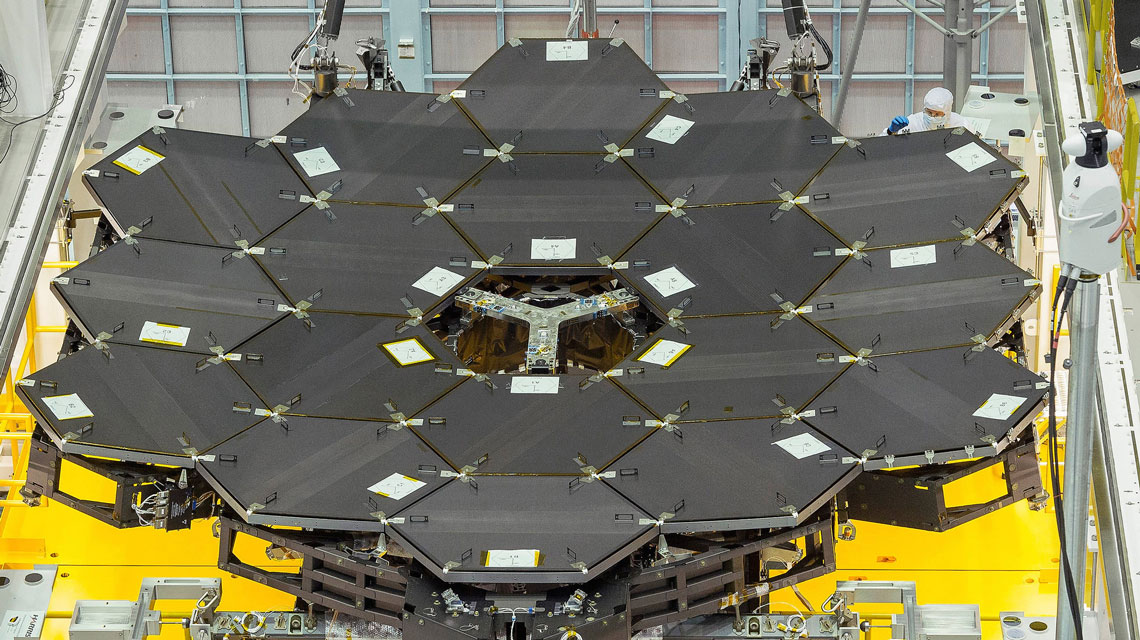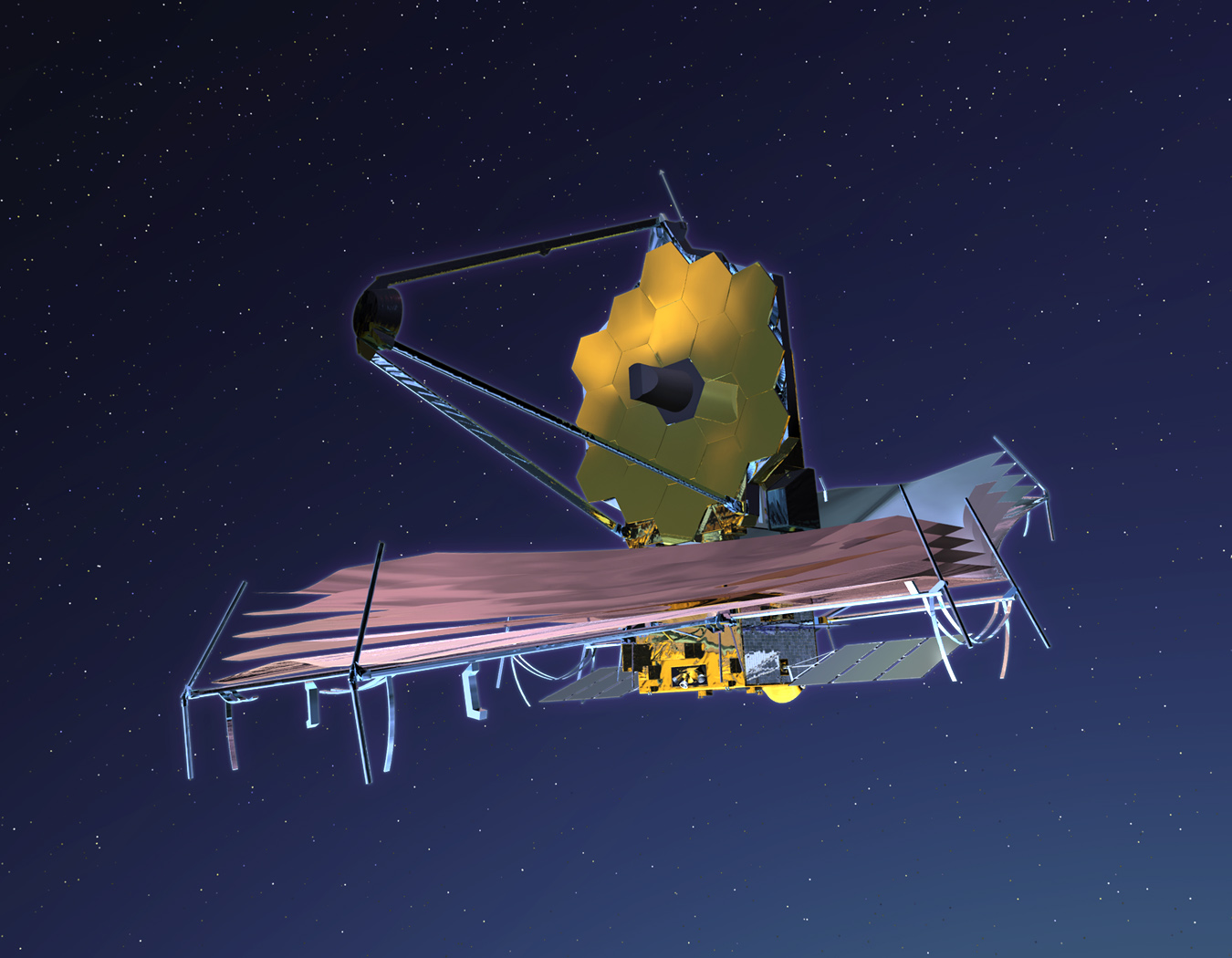Telescope "James Webb" checked ultra low temperatures and vacuum

The last three months, the telescope "James Webb" spent in extreme conditions. He was placed in a chamber, the temperature in which reached only 20 degrees Celsius above absolute zero. In addition, there was no air in this chamber - the scientists created a vacuum in order to place the telescope in open space conditions.
“Now we are convinced that NASA and the agency’s partners have created an excellent telescope and a set of scientific instruments,” said Bill Ochs, project manager for James Webb at the Goddard Space Flight Center .
The cost of the telescope is $ 10 billion. The system itself is very complex, it is collected in stages, checking the performance of many elements and the already assembled structure during each stage. Starting from mid-July, the telescope began to be checked for operability at ultra-low temperatures - from 20 to 40 degrees Kelvin. For several weeks, the work of 18 main mirror sections of the telescope was tested in order to make sure that they could work as a whole. The diameter of the composite telescope mirror is 6.5 meters.
Later, after it turned out that everything was fine, the scientists checked the orientation system, emulating the light of a distant star. The telescope was able to detect this light, all optical systems were operating normally. Then the telescope was able to determine the location of the "star", tracking its characteristics and dynamics. Scientists have found that in space the telescope will work quite correctly.
But that's not all, the telescope will have to go through many checks before it is recognized as completely ready for shipment. Recent tests have shown that the device can operate in vacuum at ultra low temperatures. Such conditions reign at the L2 Lagrange point in the Earth-Sun system.
At the beginning of February, James Webb will be transported to Houston, where it will be placed on Lockheed C-5 Galaxy aircraft. On board this giant, the telescope will fly to Los Angeles, where it will be finally assembled by mounting a sunscreen. Scientists then check whether the entire system works with such a screen, and whether the device can withstand vibration and load during the flight. The final stage - sending the telescope into space from French Guiana aboard the Ariane 5 rocket. This should happen no earlier than the spring of 2019.

NASA is trying to check everything by carefully checking the telescope system, since after sending the system into space this possibility will no longer exist. If something goes wrong, there will be a useless pile of iron and glass worth $ 10 billion in space. The service of the system is hardly possible. With Hubble, the situation was somewhat different, the problem with the lenses was corrected during one of the astronaut expeditions.
"James Webb" is a very complex system, which consists of thousands of individual elements. They form the mirror of the telescope and its scientific instruments. As for the latter, these are such devices:
- Near infrared camera (Near-Infrared Camera);
- The device for work in the middle range of infrared radiation (Mid-Infrared Instrument);
- Spectrograph of the near infrared range (Near-Infrared Spectrograph);
- The sensor of exact targeting with the device of formation of the image in the near infrared range and the gapless spectrograph (Fine Guidance Sensor / Near InfraRed Imager and Slitless Spectrograph).
It is very important to protect the telescope with a screen that covers it from the sun. The fact is that thanks to this screen, “James Webb” will be able to detect even the very faint light of the most distant stars. To deploy the screen created a complex system of 180 different devices and other elements. Its dimensions are 14 * 21 meters. “It makes us nervous,” admitted the head of the telescope development project.
The main tasks of the telescope that will replace the Hubble are: detecting the light of the first stars and galaxies formed after the Big Bang, studying the formation and development of galaxies, stars, planetary systems and the origin of life. Also, Webb will be able to tell about when and where the reionization of the Universe began and what caused it.
All Articles